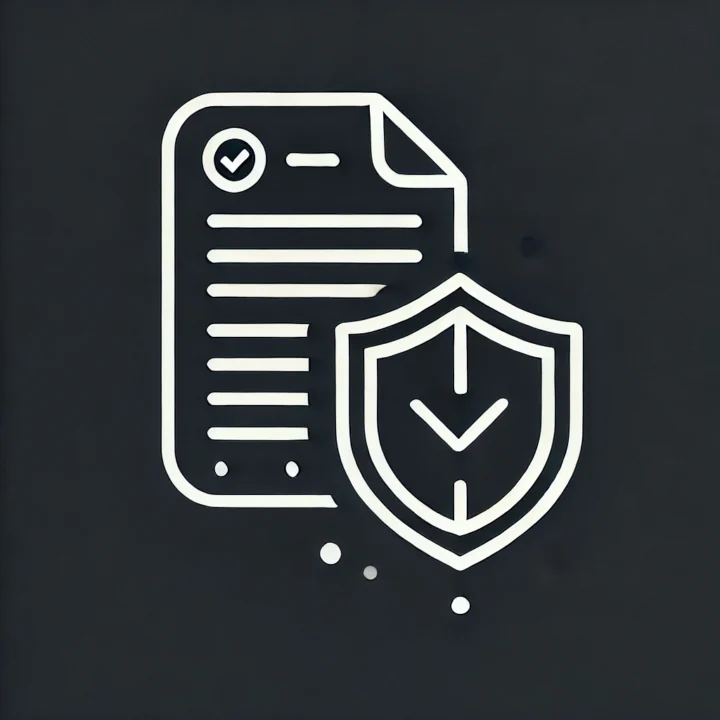ISO 27001:2022 Annex A Control 5.5 (A.5.5)
Explaining Control 5.5 (A.5.5) Contact with authorities
ISO 27001 Annex A Control 5.5 (A.5.5) ensures that an organization establishes and maintains formal contact with relevant authorities (e.g., law enforcement, regulatory bodies, and emergency services). This contact facilitates a timely flow of information and support in the event of security incidents and helps organizations stay aligned with applicable laws and regulations.

Control Type
- Preventive
- Corrective
Information Security Properties
- Confidentiality
- Integrity
- Availability
Cybersecurity Concepts
- Identify
- Protect
- Respond
- Recover
Operational Capabilities
- Governance
Security Domains
- Defence
- Resilience
Objective of Control 5.5
The objective of Control 5.5 is to ensure the organization has clear lines of communication and reporting procedures with legal, regulatory, supervisory, and other relevant authorities. By doing so, it supports compliance requirements, fosters collaboration during incidents, and anticipates future regulatory changes that could impact information security.
Purpose of Control 5.5
The purpose of this control is to enable appropriate and timely information exchange between the organization and authorities regarding any security concerns. It formalizes who, when, and how the organization contacts authorities to report or discuss potential or actual security incidents, ensuring that the organization benefits from external support and stays informed of forthcoming legal or regulatory changes.
Establishing Key Contacts
Identifying Relevant Authorities
Determine which authorities are most relevant for the organization’s operations (e.g., regulatory agencies, local law enforcement, emergency services).
Include both national and regional authorities to cover different geographical areas where the organization operates.Maintaining Up-to-Date Contact Information
Keep a centralized record of contact details.
Ensure the contact list is reviewed and updated regularly to reflect staff or structural changes in external entities.Defining Conditions for Contact
Document the specific circumstances or incident thresholds that trigger contacting authorities.
Outline escalation procedures if initial contact does not resolve the issue.
Procedures for Reporting Incidents
Incident Detection and Classification
Clarify which incidents require immediate notification of authorities and which can be managed internally.
Classify incidents by severity and potential impact on confidentiality, integrity, and availability.Timely Reporting
Establish response timelines to ensure authorities are informed promptly when required by law or by best practices.
Integrate reporting timelines into the broader incident response plan.Documentation and Record-Keeping
Keep comprehensive records of any communication with authorities, including time, method of contact, and content of the information shared.
Use these records to refine future incident responses and reporting protocols.
Ongoing Communication and Collaboration
Regular Engagement
Schedule periodic meetings with relevant authorities to stay informed about emerging threats or changes in regulations.
Leverage these interactions to provide feedback on industry-wide security issues.Monitoring Legal and Regulatory Changes
Stay aware of new or changing laws and regulations, ensuring the organization can adapt its security practices.
Engage with authorities proactively to understand and prepare for upcoming requirements.Supporting Incident Response
Embrace working relationships that enable a collaborative approach to incident response.
Demonstrate openness and transparency, which can help expedite investigations when external intervention is necessary.
Roles and Responsibilities
Top Management
Approves policy for contacting authorities and ensures it aligns with business objectives and regulatory obligations
Provides resources and supports training efforts.Compliance or Legal Department
Monitors regulatory changes and advises on required actions and updates to security policies.
Assists in official communication with authorities.Incident Response Team
Determines if/when incidents trigger mandatory reporting to authorities.
Maintains incident documentation and coordinates external communication.All Employees
Understand basic procedures for escalating security issues.
Follow organization-wide guidelines for engaging with external parties.
Relevant Controls for A.5.5
- A.5.24 – A.5.25 – A.5.26 – A.5.27 – A.5.28 (Information Security Incident Management Controls): These controls detail the processes for detecting, reporting, and responding to security incidents, which directly link to contacting authorities.
- Controls 5.29 – 5.30 (Business Continuity Planning): Contingency and continuity processes may require collaboration with emergency services or utilities in crisis events.
- Risk Assessment Controls (e.g., Clause 6.1): A comprehensive risk assessment can help identify scenarios in which contact with authorities is essential.
- Supplier Relationships (e.g., Control 5.19 or related): Communication channels with authorities may also extend to supplier or partner-driven incidents.
Templates to Assist with Control 5.5
Depending on your organization’s internal documentation practices and offerings, the following templates (if available on your website) could be useful:
- Incident Response Plan Template: Outlines workflows and responsibilities for reporting incidents, including escalation to authorities.
- Communication Protocol Template: Defines who contacts which authority and under what circumstances.
- Regulatory Compliance Checklist: Helps keep track of mandatory reporting requirements and deadlines.
- Business Continuity and Contingency Plan Template: Covers emergency contacts and detailed steps to maintain operations while coordinating with external entities.


